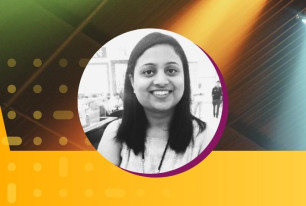People Science: A Spark that Keeps Burning
Read Sarah McLellan’s thoughts on the four letters that ignited a passion for People Science and learn how you can use it to make a difference.
Share
Having worked in the field of people science for over 15 years, I have recently reflected on why and how I found this career path.
In truth, and in slight fear of crossing the Rubicon in the great type vs. trait debate, for me, it all started with four little letters…
I always enjoyed the ‘kind’ of learning environments offered through education, and approaching the end of my degree in psychology, I experienced feelings of panic and dread. The safe bubble of education and university life nearing an end and the cold hard reality of life looming. Surely there were some options to delay?!
Fuelling an Interest
My love for social sciences really began at school. I studied Sociology and found learning about people, culture, society and the forces that shape us enticing. I continued this into A-Levels, and eventually picked up the more science-led topic of psychology.
Psychology is very broad and has evolved and progressed significantly. In the early noughties, I found myself learning about stages of development, how we process and store information in our memory, the forming of in-groups and out-groups, and personality and clinical disorders. It was clear to see how these topics have created so many applications across education, clinical settings, and for people and organizations. At its core, a desire to scientifically understand, explain and predict behavior to improve lives.
Around this time, I met someone working in the field of business (or Industrial & Organizational) psychology. He was an executive coach, specializing in the use of psychometrics (designed to understand and predict individual behavior) to help individuals understand themselves and others; to navigate careers; and develop and grow. His personality tool of choice was the MBTI and he gave me the opportunity to complete the questionnaire and understand my personality ‘type’.
It was this experience I came back to when contemplating what next in my life (being hopeful of postponing the immediate start of the rest of my life—a career!)
Igniting a Spark
The four letters I received as an output from the MBTI questionnaire, although small and seemingly insignificant, gave me a window into understanding myself in a way I had not experienced before. An explanation for the behavior I engage in and avoid, the reactions I see, or feel, from others. I felt a connection with others (there were others like me!) and a way to understand how others’ process information: Why some jump into lead and others hold back; how perceptions of progress vary; and why we manage conflict or make decisions in such polarized ways. A simple method to de-code and decipher a world of individual differences.
This sparked the initial glow in the fire that then blazed to use the power of psychology and science, to understand people and improve experiences and outcomes for individuals and organizations.
The four letters I received as an output from the MBTI questionnaire, although small and seemingly insignificant, gave me a window into understanding myself in a way I had not experienced before.
I chose an application linked to work. Occupational or Industrial & Organizational (I/O) psychology. I began working in a start-up with some of the world’s most renowned psychologists designing psychometric tools. I quickly realized there was a lot to understand and consider when designing and using measures of aptitude and behavior in the workplace. And now understand the limitations of a type-based approach vs. trait, particularly when applied to high stakes decisions (hiring, promotion, re-structure).
While I will always feel a connection with the MBTI (the creation of this, by a mother and daughter back in the 1940s was a significant turning point for the whole field of business psychology) and type psychometrics (I went on to complete research using a type instrument, measuring impact on well-being, but that is another story) and their use in organizations, has advanced significantly.
Keeping the Fire Burning
My team and I have worked with organizations across sectors and countries, tackling questions and challenges to make a difference to individuals and teams. For example, enabling companies to transform through identifying latent potential within their people to drive change; creating an objective and level playing field for Graduates, regardless of their background, to showcase their capabilities and potential to succeed; helping organizations identify future leaders at multiple stages of their career to direct investment, support and ultimately secure the future of the business.
There has never been a more exciting and meaningful opportunity for those working in this field. The discipline is growing and expanding, incorporating a fusion of technology, science, data science, people analytics and psychology to advance methods to improve working lives and organizations.
Today, People Science is a term more reflective of the multiple strands. Applications are wider too, as we tackle critical questions such as creating cultures with psychological safety; optimizing the fair and objective use of AI in people decisions; building people insight databases to anticipate and predict employee behavior (attrition, engagement, wellbeing); and of course, shaping the future of work as work and life and workplaces transform before our eyes.
The People Science community at SHL is playing a critical role in partnering with leaders and individuals to use science, data, and technology to improve wellbeing, careers, culture and productivity.
If this ignites a spark within you—get in touch. We are always looking for people with this passion to help us shape the path forward.









